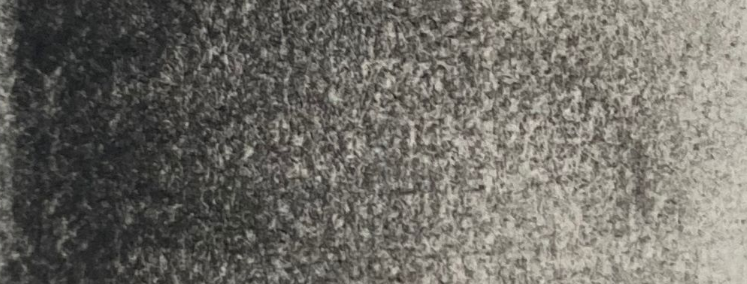

The world of art is endless. Since time immemorial, it has been evolving for the better and will continue to do so in the future as well.
Many painting styles have been discovered and used to create beautiful masterpieces. Here’s a question for you. If you desire to learn drawing and painting, what should be your foundation or starting point?
The answer is sketching art. Before mastering other aspects of drawing, it’s important that an aspiring artist learns and implements the concepts of sketching. Through this guide, we are going to learn about the top 6 types of color pencil sketching art techniques that every artist needs to master. Alright pencil warriors, let’s begin!
One of the most fundamental types of sketching art, the hatching technique is used to add shadows and depth to our artworks. This is done by using shading.
Hatching involves drawing a set of non-crossing lines that are parallel to each other. These lines portray or represent the illumination effects that a light source has on the art subject.
In simple words, if we need to showcase the illuminated areas of the art subject, the gap between the lines should be more. On the other hand, in order to represent shadows or darker areas in our artwork, the gap between these lines should be less.
As we discussed just now, the lines used in the hatching technique of sketching should not only be parallel but also proceed in the same direction. However, that does not always have to be the case.
There are exceptions to this rule. The artist gets the flexibility of adding lesser or more curvature to the lines depending on the outline or the contour of the art subject.
Such lines are known as cross-contour lines. But what even is the relevance of such lines? Straight and parallel lines are used to represent 2-dimensional artworks. This is where the cross-contour lines change the aesthetics of the drawing.
If an artist uses them in the correct manner, cross-contour lines can depict the 3-dimensional qualities of an object on a piece of paper! That is, this advanced form of hatching helps to add a 3-dimensional effect to the otherwise 2-dimensional art.
Furthermore, the 3-dimensional depiction of the art subject plus the representation of shadows through the gap between the lines gives an overall professional and realistic look to our art.
Just like hatching, cross-hatching is categorized as a sketching technique to add shadows to the art.
The usage of the cross-hatching technique is very similar to the hatching technique. This too involves drawing lines to depict shadows and illumination in the art subject.
Then what’s the difference between the two? While hatching involves the use of only one set of lines, 2 sets of lines are used to depict cross-hatching. Normally, the lines belonging to one set are parallel to each other. However, the lines of set 1 and set 2 need to intersect each other.
This is done to depict stronger shadow and illumination effects as compared to those in hatching.
In simple terms, the 2 sets of lines are made to intersect each other at equal angles in order to create the impressions of illumination and shadows. Furthermore, the lines belonging to a specific set need not be always parallel to each other.
As we discussed in the case of hatching, the artist can change the direction or the curvature of the lines according to the contour or the outline of the art subject.
The same principle can be used for cross-hatching as well. This advancement gives a three-dimensional perspective to our art.
One of the top benefits of hatching and cross-hatching techniques is that artists do not require materials like graphite and charcoal to add shadows to their art. The effects of illumination and shadows can be introduced by drawing lines with ink liners, fountain pens, etc.
In order to practice hatching techniques efficiently, click here to learn various exercises.
One of the toughest and yet most creative among the different types of sketching styles, the stippling technique involves drawing multiple numbers of small dots.
The dots form the illusion or the impression of the art subject collectively.
Let’s understand this point with more clarity. When the audience views such artwork from a close distance, nothing special appears. They only see a bunch of dots. However, if the distance between the drawing and the audience is increased, the collection of dots forms the impression of the art subject.
Thanks to this visual illusion, the stippling technique holds high aesthetic importance in the world of sketching art techniques.
The most common color choices for the dots are black and white. Artists are free to manipulate the spacing between the dots. This helps to add a variety of shades to the art.
Furthermore, the lesser the gap between the dots, the darker the shade will be. Similarly, if the gap between the dots is more, this can be used to add an illumination effect to the art.
One more method exists to add the effects of illumination and shadows in the stippling art.
This can be achieved by altering the thickness of the dots. The artist can increase the thickness of dots in the regions where a darker shade is required. Similarly, dots with lesser thickness will give the impression of lighter shades.
To get better at this color pencil sketching technique, click here and follow the guide by "the virtual instructor."
Though it’s the easiest and simplest of all sketching types, scribbling has its own value in the world of art.
The artwork inspired by scribbling involves drawing random, uneven and irregular marks or impressions with a pencil.
Note: The use of straight lines is prohibited while using the scribbling technique.
Since this type of sketching technique includes the use of uneven movements, the overall appearance of the art subject can appear to be quite irregular. However, that’s the very beauty of this type of drawing.
In order to add darker shades in certain parts of the drawing, the closeness of the drawn lines or impressions is used. The closer these lines are to each other, the darker the areas of the artwork will appear to the audience.
Now that we have discussed the basics of scribbling, let’s take a look at 2 different types of this color pencil sketching technique. These are as follows:
As the name suggests, this type of scribbling requires the least effort from the artist. It involves preparing a rough draft of the art subject. So, the expectation of keeping up with artistic etiquette is quite low here.
This kind of scribbling technique is highly useful when the artist is running low on time or when the inspiration is a real-life subject. The basic outline or the essence of the art subject is portrayed through such a sketch.
Even though it is possible to create professional-looking drawings using this technique, artists majorly use this method to design warm-up sketches.
Unlike its predecessor, this style of scribbling is used to draw organized and professional-looking artworks. In the very first step, a normal sketch of the art subject is prepared with tools like pencils.
Finally, elements like shades, scribbles, and other intricate details are added to the sketch, treating the previously drawn art subject as a reference. To make your kids more efficient in the scribbling color pencil sketching technique, click here to learn various fun exercises.
As we have already discussed, stippling and scribbling involve the representation of the art subjects through dots and random impressions respectively. The circling sketching technique is similar in nature. The only difference is that the art subject is given shape using circles.
However, it's important that we draw small-sized circular strokes to ensure smooth transitions. The correct method to draw these strokes is to move the pencil in a circular fashion.
Furthermore, the tone produced by the pencil should be controlled by the pressure applied. To get the best results, use a blunt pencil instead of a sharpened one.
Unlike the previous sketching types that we have discussed, blending does not rely on drawing marks or impressions in order to represent shades or shadows in the artwork.
Rather, this sketching technique revolves around blending the material used for adding shadows. This process is accomplished by using certain materials to apply pressure on the smudging material and rub it. Many materials can be used to complete this task. These include charcoal, graphite pencils, fingers, etc.
Note: It’s important to be careful in case you decide to use your fingers to add blending to the art.
It’s true that most beginners use their fingers for blending. However, it’s important to have knowledge regarding the issues that it can cause.
First of all, it’s important to wash them before beginning blending because the oils present in the skin can seep into the paper. So, that portion of art can become difficult to erase!
Second, the marks from the fingers can spoil a potentially good artwork. When it’s required to smoothen the smaller areas, the large size of fingers can become an obstacle. To gain more practical knowledge in blending sketching art, click here.
Do your kids love to express themselves through pencils and colors? If so, TalentGum invites you on a colorful journey full of learning and fun. We bring you specialized online arts and crafts classes for the holistic development of your child!
But why us? Because we have:
a) 30000+ registered customers
b) 40+ countries covered
c) More than 85% of customer retention
d) 4.8-average rating on Google search
So…What will they learn?:
a) Theme-based artworks, cover a variety of occasions, events, and festivals with different mediums and techniques!
b) 80+ unique artworks in a year to add to their portfolios!
c) 70+ techniques like mandala, doodle art, composition, abstract art, origami, and more…in 9 different mediums of art!
d) Theme-based artworks to cover a variety of occasions, events, and festivals with different mediums and techniques!
As a bonus, if you attend our FREE Art and Craft Demo Class, a certificate of participation shall be issued from our side.
So, what are you waiting for? Grab your crayons and get ready for a learning experience of color pencil sketching full of excitement and fun!
To book a free demo, click here.
We will send you a confirmation code
 + 91
+ 91
We will send you a confirmation code

Have trouble signing in? Use Email Address instead.
Don't have an account? Click here to Sign Up.
Almost There: Enter Your Details and Select Your Preferred Time
